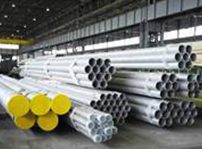
A corroded pipe section forces an unexpected shutdown. Repair costs start mounting while your team searches for replacement parts. Orders pile up in the system. Customers call with questions about delayed deliveries. Most plant managers have lived through this exact situation at least once. Maybe more than once, if they’re being honest. It’s never just about the pipe itself – the downstream effects ripple through everything. The piping material you choose today determines whether you’ll face this crisis tomorrow. The 304 stainless steel tube offers a middle ground that many engineers overlook.
Understanding 304’s Sweet Spot
Your typical 304 tube handles temperatures up to 1600°F in oxidizing environments. That covers most process applications outside of extremely high-heat operations. The material resists scaling and maintains its mechanical properties under thermal cycling. But here’s where things get interesting – 304 stainless steel tubes work best in specific conditions. Push it beyond its limits and you’ll face premature failure. Use it in the right application, and it can outlast more expensive alternatives.
Where 304 Shines in Industrial Settings
Food processing plants rely heavily on 304 stainless steel tubes. The material meets FDA requirements and resists the acids and cleaning chemicals common in these environments. Dairy processing, beverage production, and pharmaceutical manufacturing all specify 304 for good reason. The key is matching the material to your specific operating conditions. 304 delivers reliable performance when applied correctly.
Cost vs Performance Reality
Here’s something most spec sheets don’t tell you – 304 costs significantly less than 316 or 316L. The price difference can be substantial on large projects. For applications that don’t require the extra corrosion resistance of 316, you’re essentially paying for features you don’t need.
Plant managers often default to 316, thinking it’s always better. Sometimes it is. But 304 performs just as well in many applications at a fraction of the cost. The savings add up quickly when you’re running hundreds of feet of tubing.
Think about your maintenance budget, too. The 304 stainless steel tube typically requires less frequent replacement than carbon steel in corrosive environments. The material doesn’t need painting or coating like carbon steel systems.
When 304 Falls Short
Marine environments present challenges for 304 grade. Salt spray and chloride exposure can cause pitting and stress corrosion cracking. Coastal facilities might need to consider 316 despite the higher cost.
High-temperature applications above 1600°F push 304 beyond its comfort zone. The material begins to lose strength and oxidation resistance. Furnace applications or high-temperature process streams need higher-grade alternatives.
304 also struggles with certain chemicals. Hydrochloric acid, sulfuric acid at high concentrations, and some organic solvents can cause rapid corrosion. You’ll need to evaluate your specific process chemistry.
Making the Right Choice
Your operating conditions determine whether 304 makes sense. Temperature, pressure, and chemical compatibility all factor into the decision. Most standard industrial applications fall within 304’s capabilities. Consider your fabrication requirements too. 304 machines well and accepts most welding processes. The material doesn’t harden as quickly as some higher-alloy grades. This can simplify installation and maintenance.
ASTM A269 covers seamless 304 stainless steel tubing for general service. A213 addresses high-temperature applications. Most suppliers stock common sizes in both specifications.
The material delivers solid performance when matched to appropriate applications. Just don’t expect it to handle conditions beyond its design limits. 304 works best when you understand both its strengths and limitations.
